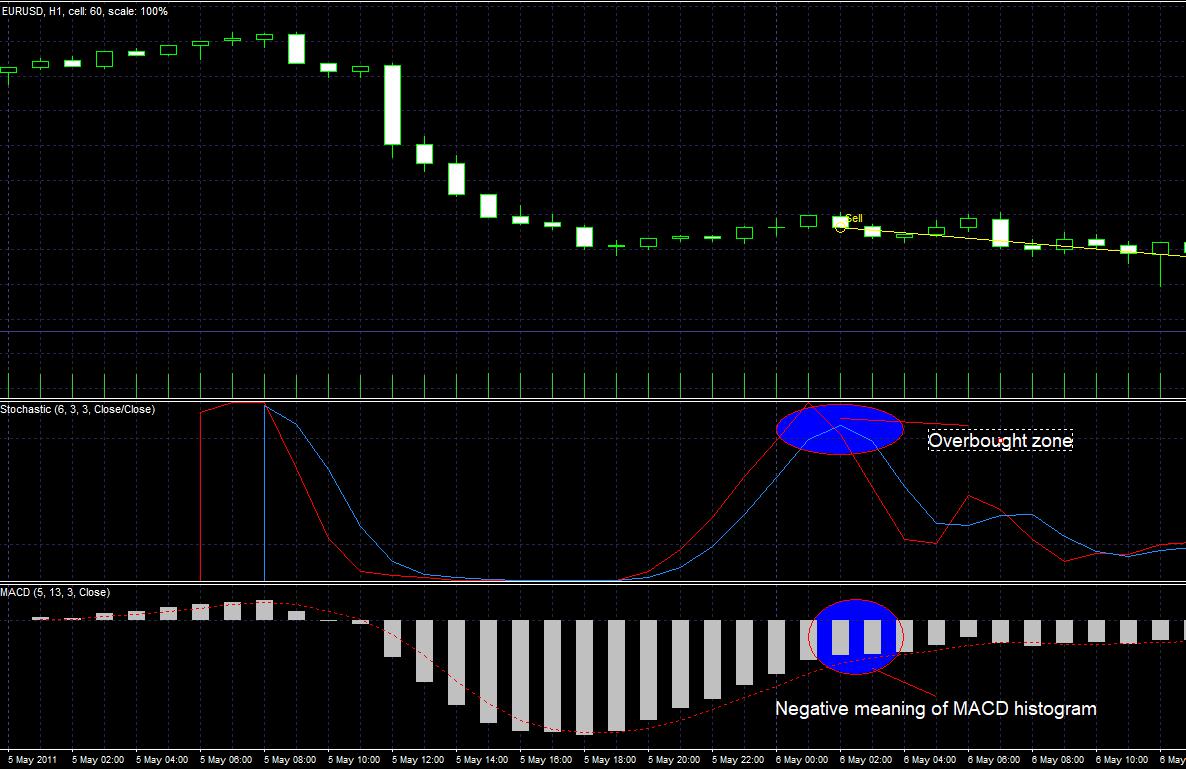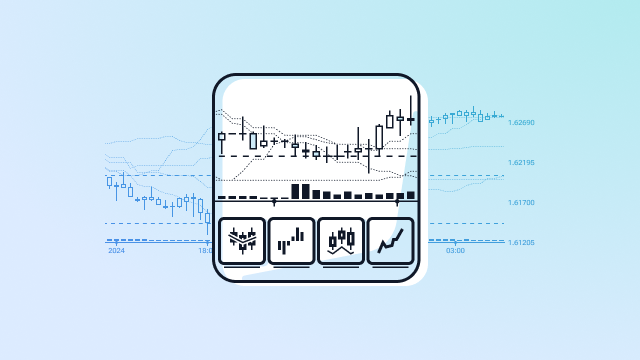Stochastic trading strategy: can 1 indicator be a solution?
The combination of Stochastic and MACD indicators is quite popular and there are a lot of “fans” of this strategy. We have tested the Stochastic + MACD strategy on three types of markets to understand how it’s going to behave itself. Take a look on the results and decide will you use it or not!
Do you know what the MACD + Stochastic strategy is?
Stochastic + MACD strategy – is a combination between the Stochastic and MACD indicators that theoretically complement one another. Many traders determinate this strategy as a cross-functional strategy that can be used on different states of market volatility.
Stochastic without MACD
Stochastic indicator is one of the most popular indicators and it is in widespread use in technical analysis. Comparing with other indicators it is known as a simply using indicator.
It is based on the K% indicator which is the major line that describes the position of the price comparing to the range of prices during the recent several periods. So it describes the position of the price comparing to the maximum and minimum.
Calculating procedure:
The stochastic oscillator is calculated using the following formula:
%K = 100(C – L14)/(H14 – L14)
Where:
C = the most recent closing price
L14 = the low of the 14 previous trading sessions
H14 = the highest price traded during the same 14-day period
%K= the current market rate for the currency pair
%D = 3-period moving average of %K
One of the main points of the Stochastic Oscillator consists in that Stochastic Oscillator allows to identify overbought and oversold levels.
What does it mean?
When the Stochastic is above 80 it means that the price is overbought and the trend is strong and likely to reverse. And the same situation when the Stochastic chart is under the 20 means that the price is oversold and its going to turn it’s direction.
Important to know:
There’s a strong opposite opinion that Stochastic indicator doesn’t show the overbought and oversold prices. Every time the Stochastic chart entered the overbought and oversold zones and stayed there for some time the trend keeps on going up or down. A high Stochastic value (above 80) and low Stochastic value (under 20) means that the trend has strong momentum and not that it is overbought or oversold.
In its turn it means that Stochastic indicator analyzes a price range over a specific time period or price candles. The Stochastic indicator takes the absolute high and the absolute low price of the period and compares it with the closing price.
How does the MACD indicator work?
The MACD indicator (or “oscillator”) is a collection of three time series calculated from historical price data, most often the closing price. These three series are: the MACD series proper, the “signal” or “average” series, and the “divergence” series which is the difference between the two.
The MACD series is the difference between a “fast” (short period) exponential moving average (EMA), and a “slow” (longer period) EMA of the price series. This indicator was invented in 1979 by Gerald Appel as a tool for setting the time for stock market. Using this indicator as a predicting tool is not so popular.
What about time periods?
As you may already know we have our own method of backtesting the strategies that considers testing the strategy with two testing sets:
- Training testing set
- Forward testing set
Training testing set considers testing of 50 trades and the forward testing set considers testing of 20 trades to confirm or disprove the result and the efficiency of training set.
Due to the fact that during testing our periods of time were too short to gain 50 trades with this strategy we have taken several time periods on each type of market to reach the required amount of deals on each type of market.
To describe our results better, we will show you our sum of profit results on each type of the market.
Technical Information
- The currency pair we’ve chosen was EUR/USD.
- The Time frame – 1 hour.
- Stochastic indicator – default settings
- MACD indicator – default settings
Entering and exiting the deals:
We receive a “sell” order signal when:
- the lines of Stochastic Oscillator cross above the Oversold Level while the histogram of the MACD is under the zero level;
- we close the deal when the conditional of at least one indicator stops working. For example, the histogram of the MACD indicator crosses the zero level from the bottom-upwards or the lines of Stochastic Oscillator change their direction.
So the main point is to have the negative meaning of MACD indicator and at the same time the Stochastic Oscillator lines should cross above the oversold zone. It means we have the “sell” type of order.
For the “buy” order the requirement is the opposite:
- The MACD histogram is positive and the lines of the Stochastic Oscillator cross at the oversold zone. It means we have the “buy” type of the order.
As you can see on the picture below the combination of MACD indicator and the Stochastic Oscillator gives us the “sell order” when the histogram of MACD indicator is under the zero level and the lines of Stochastic Oscillator cross at the oversold zone.

To describe how the “buy” type of the order comes out take a look on the picture below.
The Stochastic Oscillator lines cross at the overbought zone and MACD histogram has a positive meaning. And we close the deal when one of these conditions stops working.
Backtesting results

Conclusions
There’s a strong opinion that using the of MACD + Stochastic strategy can be affective but on the other hand this strategy is a bit controversial.
On the other hand, looking on the results of forward testing set on the flat type of the market we can see that MACD+Stochastic strategy showed its worth with the result +273.9 pips.
On the Bullish market during the training testing set of the MACD+Stochastic strategy the result was detrimental and the testing set finished with inconspicuous result. And the result of the Forward set is absolutely negative so we cannot recommend using this strategy on this type of market.
The same situation on the Bearish type of market. The result of Forward testing set is absolutely negative comparing with the negligible result during the training testing set. So, we would not recommend using this strategy on this type of market with given conditions.
Feel free to try the MACD + Stochastic strategy using another conditions, time periods, entering and exiting points.
Try It Yourself
As you can see, backtesting is quite simple activity in case if you have the right backtesting tools.
The testing of this strategy was arranged in Forex Tester with the historical data that comes along with the program.
To check this (or any other) strategy’s performance you can download Forex Tester for free. In addition, you will receive 23 years of free historical data (easily downloadable straight from the software).


